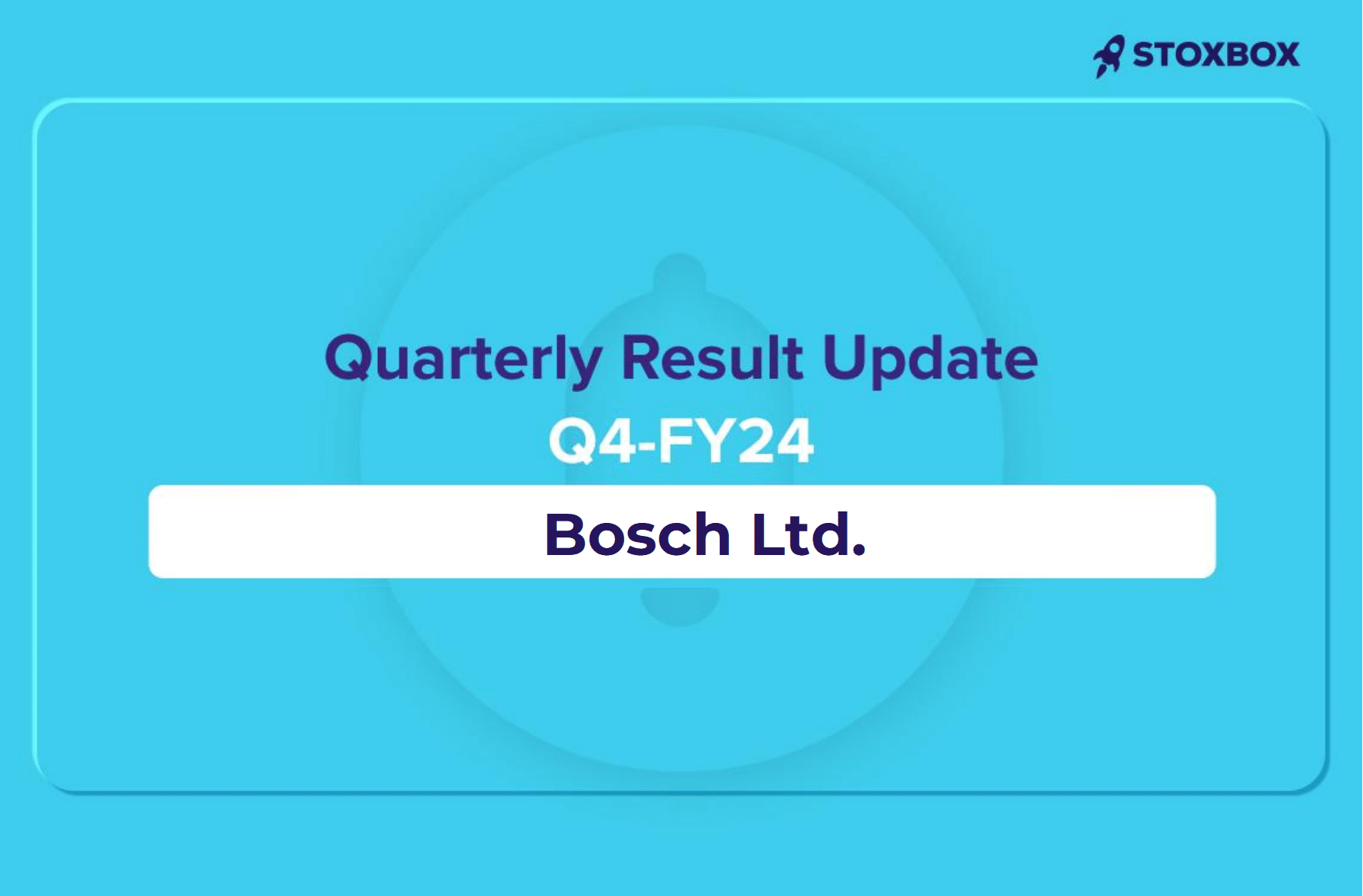Quaterly Report of Bosch Ltd for the quater Q4FY24
Table of Contents
Sector Outlook: Positive
Bosch’s Q4FY24 results were mixed. Revenue increased by 4.2% YoY and 0.7% QoQ to Rs. 4,233 crores, slightly below expectations of Rs. 4,252 crores. The consumer product segment saw a 10.1% YoY growth, while the automotive segment rose by 2.8% YoY. The mobility aftermarket business grew 9.4% due to higher demand for spark plugs and diesel products, and the 2W segment saw a 17.6% YoY increase. However, the power solutions business remained flat due to a weak tractor market. The building technologies business grew 13.9% from increased security system orders. EBITDA was Rs. 557 crores, up 6.7% YoY but down 3.7% QoQ, with a slight expansion in the EBITDA margin to 13.2%. PAT grew 41.7% YoY to Rs. 564 crores, surpassing expectations. Bosch is also preparing to enter alternate powertrain technologies, including hydrogen internal combustion engines.
Key Concall Highlights
Outlook:
- The management expects overall growth in the auto industry to slow down in CY24 due to a high base. They predict that FY25 revenue growth will be similar to FY24 levels.
- Q1 is expected to be slower because of elections, but demand is anticipated to pick up from Q2 onwards.
- Hydrogen internal combustion engine (ICE) technology is advancing in design. Many original equipment manufacturers (OEMs) are currently testing these products either in their facilities or on the road.
- Bosch forecasts that hydrogen ICE technology will capture 10-15% of the commercial vehicle (CV) market in India by 2030.
FY24 Update:
- The mobility segment grew 11% year-on-year (YoY), driven by a 10.9% YoY increase in the power solution segment. This growth was fuelled by strong performance in passenger vehicles (PVs) and heavy commercial vehicles (HCVs), along with higher content per vehicle due to exhaust gas treatment solutions post-BS6 implementation.
- The aftermarket segment grew 10.2% YoY, reaching its highest-ever sales. This growth was driven by strong demand for spark plugs, filters, and lubricants. The independent aftermarket, which now contributes 63% of the business, grew 9.1% YoY. This segment has 50,000 touch points across 650 districts and 15,000 different part numbers. It has also entered the home segment with the launch of the i6 inverter battery for power backup solutions.
- The two-wheeler (2W) segment posted a 19.2% YoY growth, driven by strong demand for fuel injectors from TVS and Bajaj Auto. Sales in the 2W segment are expected to rise in FY25 due to the pre-buying impact of OBD 2.2 implementation.
- The power tools segment has gained market share across various segments, and this trend is expected to continue. Bosch will focus on cordless tools, industrial tools, dealer engagement, and innovative new product launches tailored for medium and entry-level segments. The cordless tool segment now represents 11% of total sales in this category.
Hybrids:
- The management noted that hybrid technology is being rapidly accepted in many developed markets, including China.
- Bosch believes that hybrid technology has a limited time window but offers a full range of hybrid products globally.
- Maruti Suzuki and Toyota have already launched vehicles with Toyota’s hybrid technology in India.
- Bosch is in talks with multiple domestic Original Equipment Manufacturers (OEMs) in India to provide a range of hybrid solutions.
Localization:
- Bosch’s localization levels vary, with some mature products having 90-95% localization, while others range from 30-60%.
- OEMs encourage localization, and Bosch is localising components even if it costs more than importing.
- OEMs are aware of and supportive of Bosch’s localization initiatives.
- Bosch plans to localise Exhaust Gas Temperature (EGT) solutions with production starting in April 2025.
- The current deadline for Trem5 for tractors is April 2026, and Bosch is hopeful it will not be postponed again.
- Bosch will start with a high level of localization for Trem5.
Valuation and Outlook
Bosch had a mixed performance in Q4FY24 but expects strong growth in FY25, driven by better macroeconomic conditions after the general elections. While growth in the commercial vehicle and tractor segments might slow due to a high base, Bosch focuses on increasing localization to boost profitability and export revenues. The company is developing hydrogen technology in India and expects hydrogen internal combustion engines to make up 10-15% of medium and heavy commercial vehicles by 2030. Bosch is also strengthening its presence in the electric vehicle market and is well-prepared for new emission norms. Its strong brand, technological expertise, and support from its global parent position it for significant growth. Bosch is expanding its market reach through both offline and digital platforms, introducing market-specific products. Overall, Bosch aims to outperform the auto industry with increased localization, higher content per vehicle, and new opportunities in alternative powertrains.


